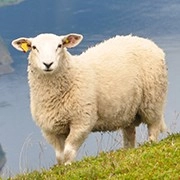The Endangered Alpacas

Have you ever come face-to-face with an alpaca? If not, you are truly missing out on one of nature's most delightful creatures. With their soft, fluffy coats and gentle dispositions, alpacas have an irresistible charm that is winning over hearts globally.
However, these beloved animals are also facing an uncertain future as an endangered species.
What exactly is an alpaca? Alpacas are members of the camelid family, closely related to llamas, vicuñas, and guanacos. Native to the Andes mountains in South America, alpacas have been domesticated for thousands of years. They were first bred by ancient Incan civilizations, and prized for their luxuriously soft fleece.
In recent decades, alpacas have gained worldwide popularity. They are spreading far beyond their ancestral home in Peru, Bolivia, Chile, and Ecuador. What is driving the alpaca's newfound fame? There are several key factors.
First and foremost, alpacas are incredibly lovely animals. They have a naturally friendly and curious demeanor. Alpacas are also relatively small for the camelid family, standing around 3 feet tall at the shoulder. This makes them less intimidating, especially for children.
Beyond their lovable nature, alpacas are highly valued for their fleece. Alpaca fiber is both extraordinarily soft and durable, similar in quality to cashmere wool. It is considered to be one of the most luxurious natural fibers in the world. Alpaca garments and blankets are prized luxury items. An alpaca can produce up to 10 pounds of fleece per year through shearing.
Alpacas are also low-maintenance livestock that are easy to care for. They have a calm temperament, require minimal housing, and have a modest appetite. Many small farms and ranches around the world have begun raising alpacas as productive, eco-friendly animals.
As alpacas spread worldwide, they became popular in unexpected ways. Some are kept as household pets due to their mild manners. Their unique look also sparked an Internet craze, with alpacas appearing on everything from socks and t-shirts to plush toys and animated videos. Who can resist those big, gentle eyes and fuzzy faces?
Unfortunately, the rising popularity of alpacas has also led to some problems. Despite being domesticated for centuries, alpaca populations in their native regions are dangerously declining. They are now officially listed as an endangered species.
Multiple threats are endangering the wild and domesticated alpaca populations in South America. Illegal poaching remains an issue, as alpaca fleece fetches high prices. Overgrazing of grasses in the mountain regions has destroyed viable alpaca habitats. Climate change is also disrupting traditional grazing patterns in the Andes.

Protecting alpacas is about more than saving an adorable animal. Their significance extends to preserving the cultural heritage of Andean communities. Alpaca farming provides economic stability and upholds Indigenous traditions spanning millennia. Losing alpacas would be a devastating loss for this world.
So the next time you see an alpaca on a t-shirt, social media meme, or even in person, appreciate their lovely nature but don't take them for granted. Alpacas hold cultural significance, produce a valuable natural resource, and face an uncertain future after centuries of prominence in the Andes. It's up to all of us to ensure these beloved, endangered animals survive and thrive for generations to come.

 · Animal Team
· Animal Team